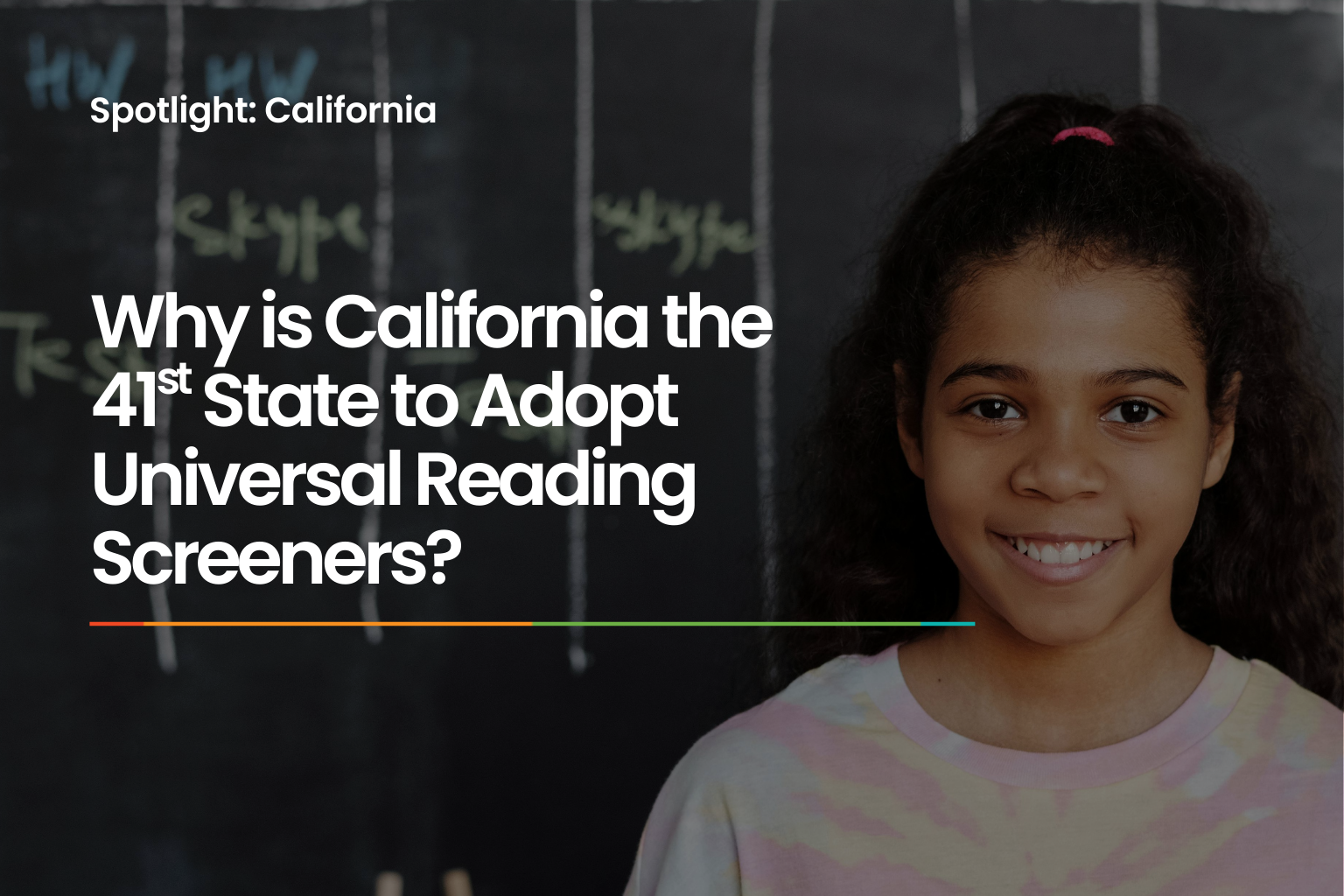For years, California lagged behind much of the United States in implementing early reading interventions, particularly in the use of universal reading screeners. Unlike Mississippi, Colorado, and North Carolina, California hesitated to adopt early literacy assessments designed to identify young students who might struggle with reading.
This is changing. In 2024, SB 691 was passed, and California is now beginning universal early literacy screening for students in kindergarten through grade 2. This is the first critical step in addressing early reading difficulties and enabling educators to support children who would otherwise fall behind.
Roadblocks to Reform
Why did it take so long for California to act, especially in the face of significant literacy struggles compared to other states? The answer, as one might expect, is a complex mix of educational philosophy, politics, and logistical challenges.
A Deep Culture of Local Control. California’s school system is designed to give school districts control over their curricula and assessments. This made centralized statewide screening a tough sell, as it was seen as an overreach on local autonomy.
Philosophical Divides in Reading Instruction. For decades, California education leaders largely subscribed to the somewhat misguided “balanced literacy” approach. This focused primarily on fostering an interest in reading, emphasizing student choice, and promoting strategies akin to contextual guessing. While many other states embraced the Science of Reading and made statewide efforts to adopt structured literacy curricula, decisions about instructional methods and materials remained at the local level.
Cost and Logistical Hurdles. California is the most populous state in the country, and one of the most diverse. Implementing a universal screening system for all students in kindergarten through grade two is a huge logistical challenge. These concerns slowed momentum and policy efforts.
Political Skepticism. Even as other states pushed forward with early literacy intervention, some teacher unions and advocacy groups were concerned that universal screeners could be used to prematurely label children without providing adequate supports.
Turning Points
California’s adoption of universal screeners is the result of many years of mounting evidence and public pressure.
- 2019: California watched as other states began showing significant reading gains thanks to early assessment and structured literacy practices.
- 2020-2021: National media drew attention to California’s struggles in light of the COVID-19 pandemic, which widened reading gaps for young students.
- 2023: California Governor Gavin Newsom, who has dyslexia, was vocal in his support of early screening. It was then included in a funding bill, SB 114, and began gaining bipartisan support.
- 2024: SB 691 was officially passed, mandating early literacy screening.
- 2025: Universal reading screenings begin in June 2025, to be implemented in the 2025-2026 school year across the state.
What's Next for California?
One thing is for sure – there is no time to waste, and SB 691 is the pivotal step needed to provide literacy support for California’s youngest students. The good news is that there is strong evidence to suggest screeners are effective in other states when used with a structured literacy approach. When Mississippi implemented screeners and a robust phonics-based curriculum in 2013, it experienced such dramatic reading gains according to the National Assessment of Educational Progress (NAEP) that it was dubbed the “Mississippi Miracle.”
The real challenges for California must be addressed after assessments are completed. These include:
- Training educators in structured literacy instruction, including teaching phonics in a systematic way
- Using screening results constructively as a way to inform instruction
- Building reading intervention systems to support children who are struggling
With investment, commitment, and an evidence-based approach, early reading screening can transform the literacy landscape in California. While SB 691 is an optimistic start, the real work lies in providing strong support systems for the children who need it the most.
